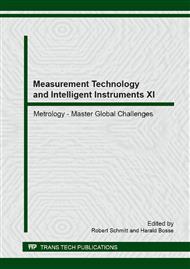p.335
p.344
p.354
p.363
p.374
p.381
p.392
p.401
p.408
Novel Method for Predicting Solar Proton Events Based on Grey Relational Analysis and Joint Probability Density
Abstract:
Solar proton event is one of the important sources of interference, which may cause perturbations of the Sun-earth system in a great contingency. Big levels of proton events can also affect the reliability of carrier laboratory equipment in space station. The safe operation of on-orbit space station may be threatened at sometimes. This paper presents a new method to predict the probability of occurrence and estimate the level of proton events based on grey relational analysis and joint probability density forecast. Firstly, the grey relational analysis is applied to extract the most relevant data sequences from numerous related characteristic quantities which characterize events occurrence. Secondly, the characteristic data sequences are made to be dimensionless and the dimensions are compressed. After the sequences of characteristic factors are recombined, the new independent integrated variables can be generated. Finally, the GM(1,N) prediction model for the present and absent event established. At the same time, the joint probability density method is used to analyse the optimized characteristic factor sequence, the joint probability density model of different levels of proton events corresponding characteristic factors can also be obtained. The combination of the model and setting event level threshold value are obtained, and the joint probability density discriminator is constituted. The level of impending proton event is predicted by utilizing the discriminator. The results show that the event predictive precision rate is prior to 90% by selecting the data of solar proton events occuring in 2012 for model prediction, and the prediction accuracy of events level is superior to 85%.
Info:
Periodical:
Pages:
374-378
Citation:
Online since:
May 2014
Authors:
Price:
Сopyright:
© 2014 Trans Tech Publications Ltd. All Rights Reserved
Share:
Citation:


